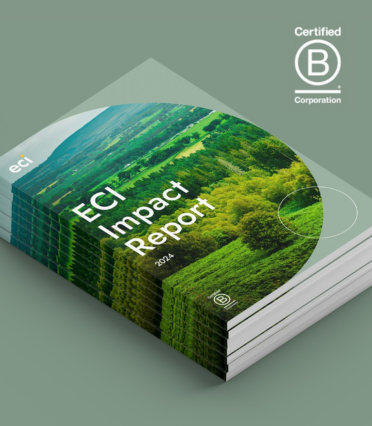The MSP market has attracted significant M&A activity over recent years, with landmark deals completed and new pricing benchmarks set. So, in what continues to be a diverse and highly fragmented market, the key question is, how do you stand out from the crowd? You can’t be everything to everyone, but from an investor’s perspective these are some key value drivers that MSP CEOs might want to consider when setting the strategy and positioning of their business:
1. Customer set
Most MSPs provide services to a broad range of customer sizes, with it being rare to find businesses that only support SMEs, Mid-Market or Enterprise clients. However, it is increasingly common to see MSPs adopting a strategy of targeting bigger customers due to their more complex needs and larger technology budgets. To do this effectively the MSP must be able to offer a wide breadth and depth of services if the up-sell and cross-sell opportunity is to be realised.
The land and expand opportunity can be a compelling pitch to investors as it potentially underpins a strong growth thesis, with an MSP seeking to achieve greater penetration of its broad service portfolio with customers. It is important to balance this opportunity with the risk that comes with customer concentration. Investors like customer diversification (we can be a bit ‘cake and eat it’) as this reduces the reliance of an MSP on certain customers. It also means growth isn’t as reliant on landing a small number of ‘whale’ customers each year, which can lead to binary outcomes. Those targeting SMEs will typically benefit from very little customer concentration and customers that are more likely to outsource services. However, winning lots of small new SME logos in a year can be hard work, so it is important to have a strong sales engine and an operational model that can provide a high-quality service to smaller customers both efficiently and profitably.
2. Revenue types
A key focus in any investment process will be the revenue split between managed and professional services. Managed services provide a sticky, recurring revenue stream, which helps underpin a resilience case, a key focus for investors. However, the counter to this is that as the market has matured the margins associated with certain managed services have naturally reduced as they become more commoditised. Plus, there’s a debate about the long-term growth of certain managed services given the growing adoption of cloud-based solutions and SaaS, where support might for example be provided directly by a software vendor (e.g. Salesforce), rather than via an intermediary MSP.
This means that the majority of recent MSP growth has been driven by professional services, particularly those that help businesses digitally transform and continually optimise for the future. In our view, an optimal model is usually one that has a blend of both revenue streams as we believe that there can be a healthy symbiotic relationship between the two. Managed services can act as a lead generator for higher margin professional services (or vice versa), and certain managed services such as a cyber security managed detection and response service, can be attached to an initial professional services piece of work (e.g. remediation work from a malware attack on a customer).
3. Automation and efficiency
Many MSPs have invested significant amounts into the digital transformation of their own business. Automating manual tasks and pre-emptively driving efficiency across routine processes will help MSPs protect their margins. For example, by performing root cause analysis on a support ticket raised by a customer and proactively rolling out the fix to all customers, irrespective of whether they have suffered from the same issue. Similarly, those with well-established offshore resources may be able to demonstrate the efficiencies of their operational deliverability and give investors more conviction in potential scalability. This is something that is particularly pertinent in the inflationary and tight tech labour market that the UK is currently experiencing.
4. Highly valued services
Clients typically want an MSP to be a ‘one-stop shop’ that can satisfy their full needs, ranging from the provision of hardware to digital transformation. However, investors will want to see evidence that revenue streams are resilient, particularly in the face of increased cloud adoption. Private cloud hosting revenue remains high-margin but may be difficult to defend in the long-term with hyperscalers rapidly innovating their public cloud platforms and concerns around data security in the public cloud having been materially diluted over time. The rapid rise in energy costs has also led to data centres passing material price increases on to customers which is incentivising a move to the public cloud, albeit we acknowledge that such a transition is not appropriate in all situations and do expect private cloud to remain a feature of the market for some time to come.
Businesses should demonstrate how customer margin can be maintained, or even enhanced, as customers transition from older technologies to newer ones. Having access to high-growth and high margin areas such as cyber or data analytics will be seen as valuable.
5. Strong employee proposition
When ECI surveyed tech CEOs as part of our 2022 Growth Characteristics research, many of them flagged that finding the best talent was their biggest business concern. Talent shortages in tech have posed barriers to growth in the industry for a while, so investors will want to understand retention and recruitment capability. A strong employee proposition backed up by good KPIs around churn and employee engagement scores, will help to underpin any growth story.
6. Barriers to entry
Although AWS, Microsoft and GCP all continue to grow materially in the market, this represents more of a potential risk to Global System Integrators than MSPs. Hyperscalers don’t want to deal with a large number of non-enterprise businesses, so MSPs remain an important channel for them. Microsoft in particular continues to actively promote this relationship. For example, being a Microsoft Managed Partner can enhance an MSP’s position in the market, as it provides greater visibility over future product roadmap and can be a great source of leads. Any vertical focus can also provide credibility within subsectors and act as a barrier to entry.
7. M&A track record
As mentioned, the MSP market remains fragmented, which means that consolidation is fairly common. That may be a general buy-and-build strategy, or just certain strategic acquisitions within key capability areas to solve for skills shortages. From an investor’s point of view, if a management team can demonstrate a great acquisition roadmap and experience in integrating and driving revenue and cost synergies, that will give fantastic conviction in M&A as a value enhancer going forwards.
8. Potential acquirers
An MSP that can demonstrate strong growth and a loyal customer base will attract interest from multiple acquirers. Trade, PE-backed trade and private equity have all been extremely active in the market, due to high growth and strong resilience. Investors are likely to have one eye on the next acquirer at the time of the investment, so may consider how the customer base, range of services and the nature of the revenue model will dictate where buyer interest is likely to come from. Several PE-backed platforms have been established which are expected to continue driving market consolidation.
In summary, we believe that the MSP market is an exciting place to be and one where there remain many opportunities to achieve exceptional growth. There are things to consider, as outlined above, but if a business can position itself well, there are plenty of well-funded buyers, including ECI, who are prepared to pay up for the best businesses.
If you’d like to discuss your MSP business or how we’ve helped MSPs to scale in the past, please reach out.


